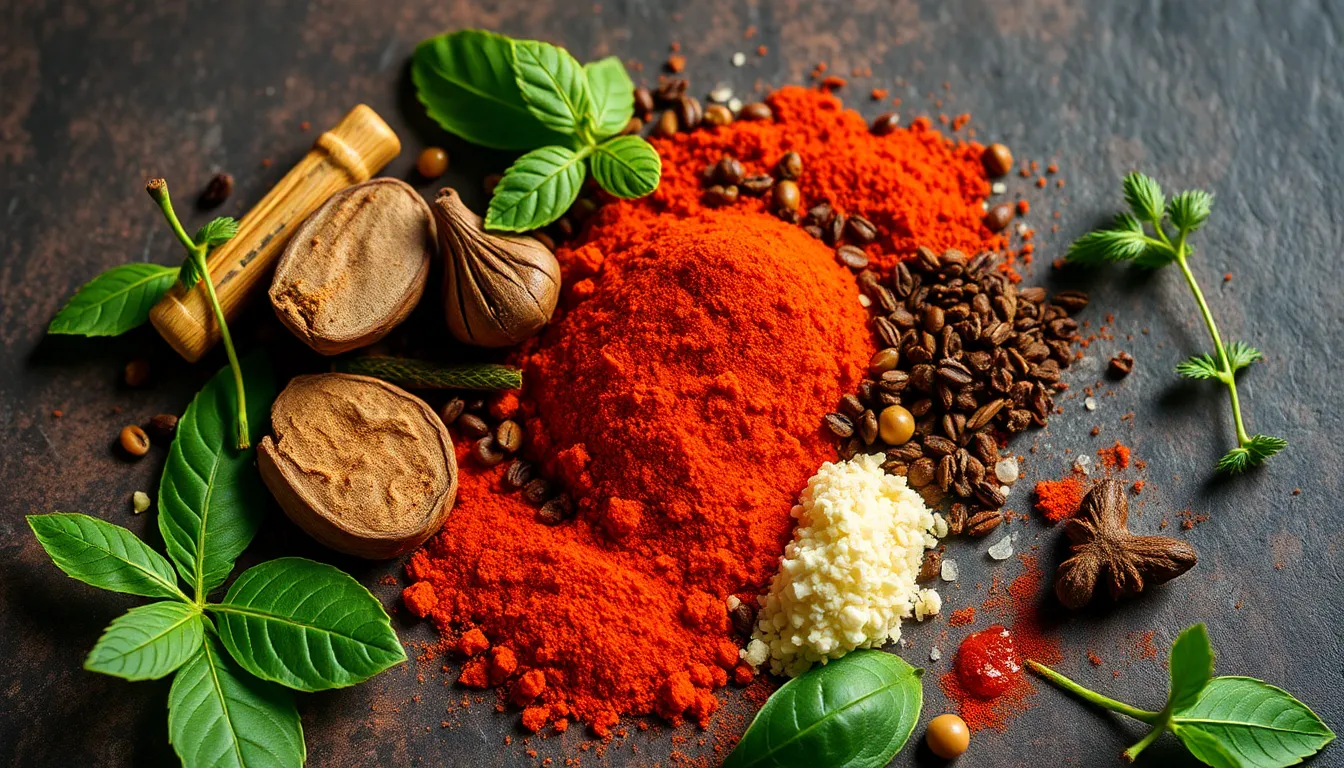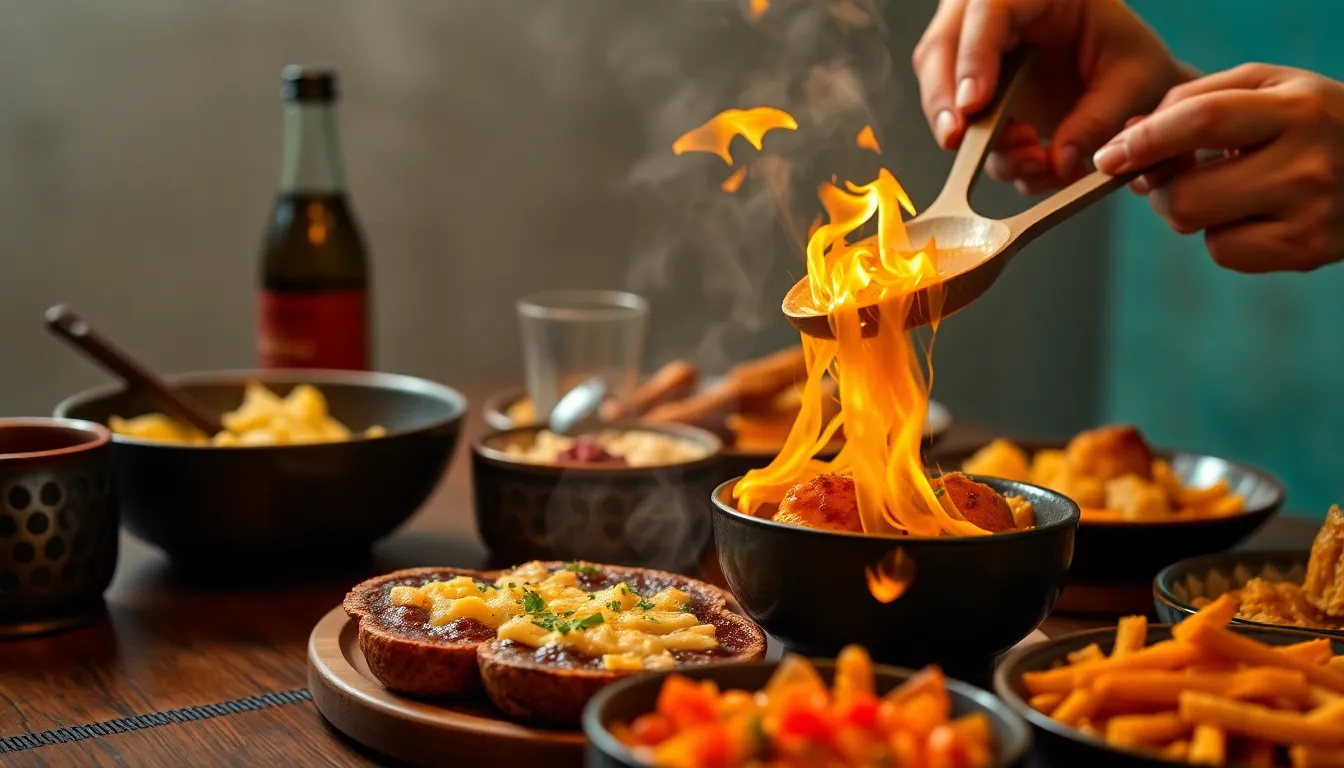The Magic of Brazilian Spices: Elevate Your Cooking with These Key Ingredients
Introduction: A Flavorful Journey to Brazil
Brazilian cuisine is a vibrant tapestry woven from cultural influences, regional traditions, and a bounty of ingredients. From the sweet, tropical flavors of the Amazon to the rich, smoky dishes of the South, every region offers a unique perspective on what makes food special. Central to this culinary narrative are the spices that not only enhance dishes but also tell stories of the land and its people. This article aims to introduce you to key Brazilian spices that can elevate your home cooking, making it a flavorful journey to Brazil right from your kitchen.
1. The Essence of Brazilian Spices: What Makes Them Unique?
The uniqueness of Brazilian spices lies in their deep roots and diverse origins. Influenced by Indigenous cultures, African traditions, and Portuguese colonization, Brazilian spices encapsulate a rich history. The country’s vast geography, ranging from the Amazon rainforest to the arid Northeast, creates a diverse climate conducive to an array of spices.
In Brazilian gastronomy, “aroma” and “flavor” play pivotal roles. Aromas can trigger memories, while flavors encourage exploration and experimentation. Understanding these elements is crucial to mastering Brazilian cooking, enabling you to evoke the essence of Brazil in every dish.
2. Key Brazilian Spices to Transform Your Dishes
2.1. Pimentão Malagueta: The Fiery Heart of Brazilian Cuisine
Malagueta pepper, known for its intense heat and fruity flavor, is often regarded as the soul of Brazilian cuisine. It adds a fiery kick to dishes, making it a staple in countless recipes.
- Flavor Profile: Spicy, slightly fruity with a lingering heat.
- Culinary Uses: Commonly used in seafood dishes, marinades, and hot sauces.
Traditional dishes featuring Malagueta include Moqueca (a coconut milk and fish stew) and Vatapá (a creamy shrimp paste). A dash of Malagueta can transform a simple dish into a culinary adventure.
2.2. Cumin: Earthy Depth for Every Meal
Cumin is a spice that adds earthy depth to Brazilian stews, particularly in the Northeast region. Its warm and slightly nutty flavor complements a variety of meats and legumes.
- Toasting Tips: Toast cumin seeds in a dry skillet until fragrant to enhance their flavor before adding them to dishes.
- Culinary Uses: Perfect for seasoning beans, meats, and spicy dishes.
2.3. Dende Oil: The Golden Elixir of the Tropics
Dende oil, or palm oil, is a vibrant yellow-orange oil derived from the fruit of the African oil palm. It’s an essential ingredient in many Brazilian recipes, imparting a unique flavor and color to dishes.
Incorporate dende oil into everyday recipes, such as a classic Moqueca or drizzle it over grilled vegetables for a tropical twist.
2.4. Paprika: Sweet and Smoky Notes
Brazilian cuisine utilizes various types of paprika, including sweet, smoked, and hot varieties. Each type adds a distinct layer of flavor, enhancing everything from stews to grilled meats.
- Recipe Idea: Try a Chilean Paprika Chicken that showcases the versatility of paprika as a featured ingredient.
2.5. Coriander: Freshness That Brightens Every Bite
Coriander plays a dual role in Brazilian cooking, with both its seeds and fresh leaves adding freshness and depth to dishes. The seeds offer a warm, spicy flavor, while the leaves provide a bright, citrusy note.
- Culinary Uses: Great in salads, sauces, and marinades—especially in Feijoada (a black bean stew).
2.6. Black Pepper: The Universal Spice
Black pepper has a historical significance in Brazilian cuisine, once considered a luxury. It continues to be a beloved spice that enhances flavor without overpowering it.
- Creative Uses: Consider using freshly cracked black pepper in dessert recipes such as chocolate cakes or ice creams to provide an unexpected twist.
3. Spice Blends: The Art of Brazilian Seasoning
Brazilian cuisine embraces a variety of spice blends that enhance the complexity of dishes. Two popular blends are “Tempero Baiano” and “Caruru,” each bringing a unique flavor profile to the table.
| Spice Blend | Key Ingredients | Flavor Profile | Best Used In |
|---|---|---|---|
| Tempero Baiano | Cumin, Coriander, Garlic, Onion | Earthy, Savory | Stews, Rice |
| Caruru | Dende Oil, Shrimp, Spices | Rich, Tropical | Sauces, Seafood Dishes |
4. Tips for Incorporating Brazilian Spices in Your Kitchen
Embracing Brazilian spices in your kitchen begins with sourcing authentic ingredients. Look for specialty stores or online retailers that focus on international spices. Here are some practical tips for incorporating these spices into your cooking:
- Storage: Keep spices in airtight containers away from light and heat to preserve their potency.
- Experiment: Don’t be afraid to mix and match spices to create your own blends, enhancing dishes with layers of flavor.
- Pairing: Consider pairing spices with seasonal ingredients for maximal freshness and flavor impact.
5. Recipes to Get You Started: Brazilian Flavor in Your Home
5.1. Spicy Brazilian Shrimp with Malagueta
This dish is a fantastic introduction to the bold flavors of Brazilian cuisine. It’s quick to prepare and perfect for a weeknight dinner.
Ingredients:
- 1 pound shrimp, peeled and deveined
- 2 tablespoons dende oil
- 3-4 Malagueta peppers, finely chopped (adjust to your heat preference)
- 2 cloves garlic, minced
- Juice of 1 lime
- Salt and pepper to taste
Instructions:
- In a skillet, heat the dende oil over medium heat.
- Add the minced garlic and chopped Malagueta peppers, sautéing until fragrant.
- Add the shrimp, lime juice, salt, and pepper. Cook until the shrimp are pink and opaque, about 3-5 minutes.
- Serve hot with rice or over a bed of sautéed vegetables.
By introducing these key Brazilian spices into your cooking, you can take your culinary skills to exciting new heights. Explore, experiment, and most importantly, enjoy the diverse flavors that Brazil has to offer!




